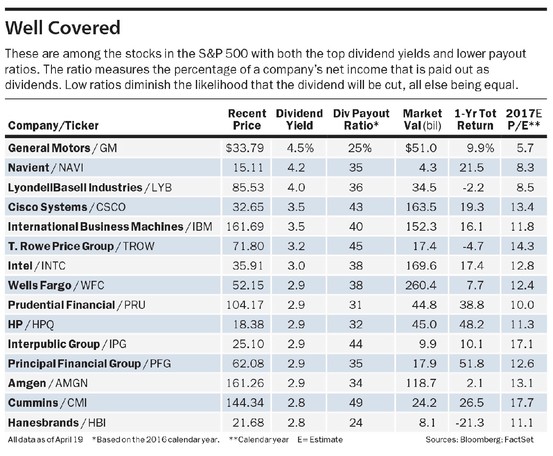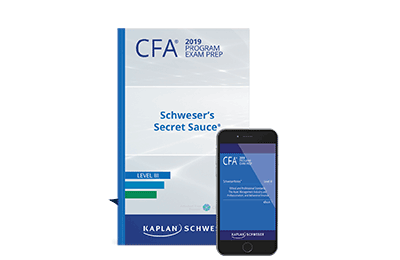Contents:


This is especially true when fixed overhead is included in the data used to determine a product’s cost through absorption costing. Fixed overhead is a necessary component of production, but it can inflate the actual cost of manufacturing. To calculate an absorption cost, sum the direct cost, material cost, and overhead costs, then divide by the number of units produced. One of the most significant advantages of absorption costing is the fact that it’s GAAP-compliant. As such, it’s required for stock valuation and the preparation of reports for your firm’s financial statements. The goal of absorption costing is to create a more accurate picture of the actual cost of production.
This https://1investing.in/ assumes that both the materials you use and the labour (i.e the wages) it takes to produce the product jointly lead to factory overheads. Therefore, the total cost of both material and labour should be accounted for when calculating the absorption of factory overheads. Variable or marginal costing and full or absorption costing methods are two widely used inventory costing methods. According toAccounting Tools, the first line item of an absorption income statement is gross sales for the period.
It involves additional cost in ascertaining working hours of machines. When piece rate systems are used for payment, labour working hours may not be available in records. This method cannot be used when machines are extensively used for production. It is necessary for any company that operates in the United States. Examples of these costs are rent, insurance, depreciation, and the salaries of production managers. The formula may also include an additional markup for profit, at the discretion of the company.
Full absorption costing — tax considerations
The GoCardless content team comprises a group of subject-matter experts in multiple fields from across GoCardless. The authors and reviewers work in the sales, marketing, legal, and finance departments. All have in-depth knowledge and experience in various aspects of payment scheme technology and the operating rules applicable to each. When removing items from beginning inventory, it is important to know whether the company uses the last-in, first-out or first-in, first-out convention.

Can be determined based on the labor rate, level of expertise, and the no. of hours put in by the labor for production. However, the labor cost can also be taken from the income statement. Per unit, and fixed costs, such as fixed manufacturing overhead per unit. The cost of revenue is the total cost of manufacturing and delivering a product or service and is found in a company’s income statement. Because more expenses are included in ending inventory, expenses on the income statement are lower when using absorption costing.
Percentage of Prime Cost
Businesses that can maintain a consistent product demand will benefit from this circumstance. In addition, when absorption costing is used, it creates a scenario in which increased production of things that end up being unsold at the end of the period will result in a rise in the company’s net income. Therefore, absorption costs will result in a more significant profit if the number of units produced exceeds the number of units sold. When using absorption costing, the amount of ending inventory that appears on the balance sheet will be more significant. However, the costs that appear on the income statement will be lower. According to the absorption costing methodology, the remaining unsold stock of 200 units is valued at 1,16,000 yen.

When used correctly, it can be a valuable tool for any business looking to stay competitive in today’s marketplace. Once you have determined the usage for each activity, you can allocate the costs accordingly. This will help you better understand where your money is going and how to optimize your production process. For example, if you are manufacturing a product that takes two hours to produce and have one worker paid $10 per hour, the labor cost for that activity would be $20. This is a simple, easy, and efficient method of overhead absorption.
Components of Absorption Costing
The articles and research support materials available on this site are educational and are not intended to be investment or tax advice. All such information is provided solely for convenience purposes only and all users thereof should be guided accordingly. It is rare for applied overheads to agree with actual overheads; a difference is always likely to exist. If the absorbed amount exceeds the actual overhead, the difference is termed overapplied overhead. This method is usually applied in cases where labor is the main factor in production.
Cortexi Review: (2023 Scam Alert) 21 Days Unbelievable Results and Side Effects Exposed! – The Tribune India
Cortexi Review: (2023 Scam Alert) 21 Days Unbelievable Results and Side Effects Exposed!.
Posted: Mon, 10 Apr 2023 12:10:00 GMT [source]
Next, post closing trial balance which part of the manufacturing overhead is fixed in nature and divide the value by the number of units produced to arrive at a per-unit cost. This method may be used to calculate overhead absorption when you’re manufacturing a product that is labour intensive , but there is little machine involvement, and therefore low machine-related expenses. If machine operator’s wages are also added to the ordinary machine hour rate it is called comprehensive machine hour rate. But other costing experts object to such a procedure because, it makes a direct cost into an overhead item.
Costs of Overhead That Are Assigned in Excess- Drawbacks of Utilizing Absorption Costing
So, we have the ability, therefore, to work out the overheads that will be absorbed over the course of this financial period. In order to do this, we take the actual, in this case, machine hours. The actual machine hours worked in the period were 21,000, and we multiply that by department A’s overhead absorption rate, which we’ve worked out previously to be $20 per machine hour. Now, that would give us an overhead absorbed of $420,000, which is what we have in our management accounts at the moment. What that budgeted level of activity is within the calculation of the overhead absorption rate, actually varies depending on the department under consideration.
- The absorption costing method is different from other costing methods as it considers fixed overhead costs along with variable costs while computing product cost.
- The traditional income statement, also called absorption costing income statement, uses absorption costingto create the income statement.
- First-in, first-out, or FIFO for short, is one of the inventory costing techniques used most often, along with average cost and last-in, first-out .
This information is essential for managers when making pricing, product mix, and capacity utilization decisions. Additionally, absorbing costs can be used in financial reporting to comply with generally accepted accounting principles . In business, “absorb costs” typically refers to allocating indirect costs to merchandise or services. These expenses are not charged directly to a specific cost center but are instead allocated based on direct labor or machine hours.
Pros and cons of absorption costing
When absorption costing is used, the expenditures that appear on the income statement are reduced. This is because more expenses are included in the inventory total at the end of the period. Absorption cost accounting (also known as the “Cost-Plus” approach), is a method that is centered upon the allocation of Manufacturing Cost to the product.
Iodine: Benefits, side effects, research and dosage – Longevity.Technology
Iodine: Benefits, side effects, research and dosage.
Posted: Thu, 06 Apr 2023 18:24:09 GMT [source]
One of the main reasons to use this method is that it is generally accepted accounting principles compliant. This means that if a company wants to report its financial results in accordance with GAAP, it must use absorption costing. In addition, absorption costing provides a holistic costing perspective that can be beneficial for strategic and financial decision-making. Absorption costing is also often used for internal decision-making purposes, such as determining the selling price of a product or deciding whether to continue producing a particular product. Under generally accepted accounting principles , U.S. companies may use absorption costing for external reporting, however variable costing is disallowed.
- It’s a very simple approach to absorb overheads into cost units; very simple in that it’s not overly detailed, it’s not overly complex.
- Because of this shift, the actual cost of production will be higher than anticipated, and the data that is now accessible will not be sufficient for conducting an in-depth examination.
- Calculations using fixed costs provide a lower net income than those using variable costing do as a consequence of this.
- This information is essential for managers when making pricing, product mix, and capacity utilization decisions.
But we’ve now also got the overhead absorption per unit being $65, which gives us a full production cost for Product X of $91. Once again, we’ve got the expected time in terms of machine hours and labour hours for Product X in department B, but the most important thing is our overhead absorption rate is $25 per labour hour. So, when we’re absorbing department B’s overheads into Product X, we have to pay attention to the labour hours per unit and in this case, that’s one labour hour. Work-in-process includes inventory items that have started, but not yet completed production at the end of the accounting cycle. It is common for companies to have several stages of production, and each stage requires an input of direct labor, direct material and operational overhead. WIP value is computed in the same manner as completed inventory, but fewer costs are allocated to each unit.
Absorbed Cost: Definition, Examples, Importance – Investopedia
Absorbed Cost: Definition, Examples, Importance.
Posted: Sun, 26 Mar 2017 05:47:56 GMT [source]
Absorption costing is a method of costing that includes all manufacturing costs, both fixed and variable, in the cost of a product. Absorption costing is used to determine the cost of goods sold and ending inventory balances on the income statement and balance sheet, respectively. It is also used to calculate the profit margin on each unit of product and to determine the selling price of the product. So, to work out this over or under absorption, first of all, we work out our overhead absorbed in the period.